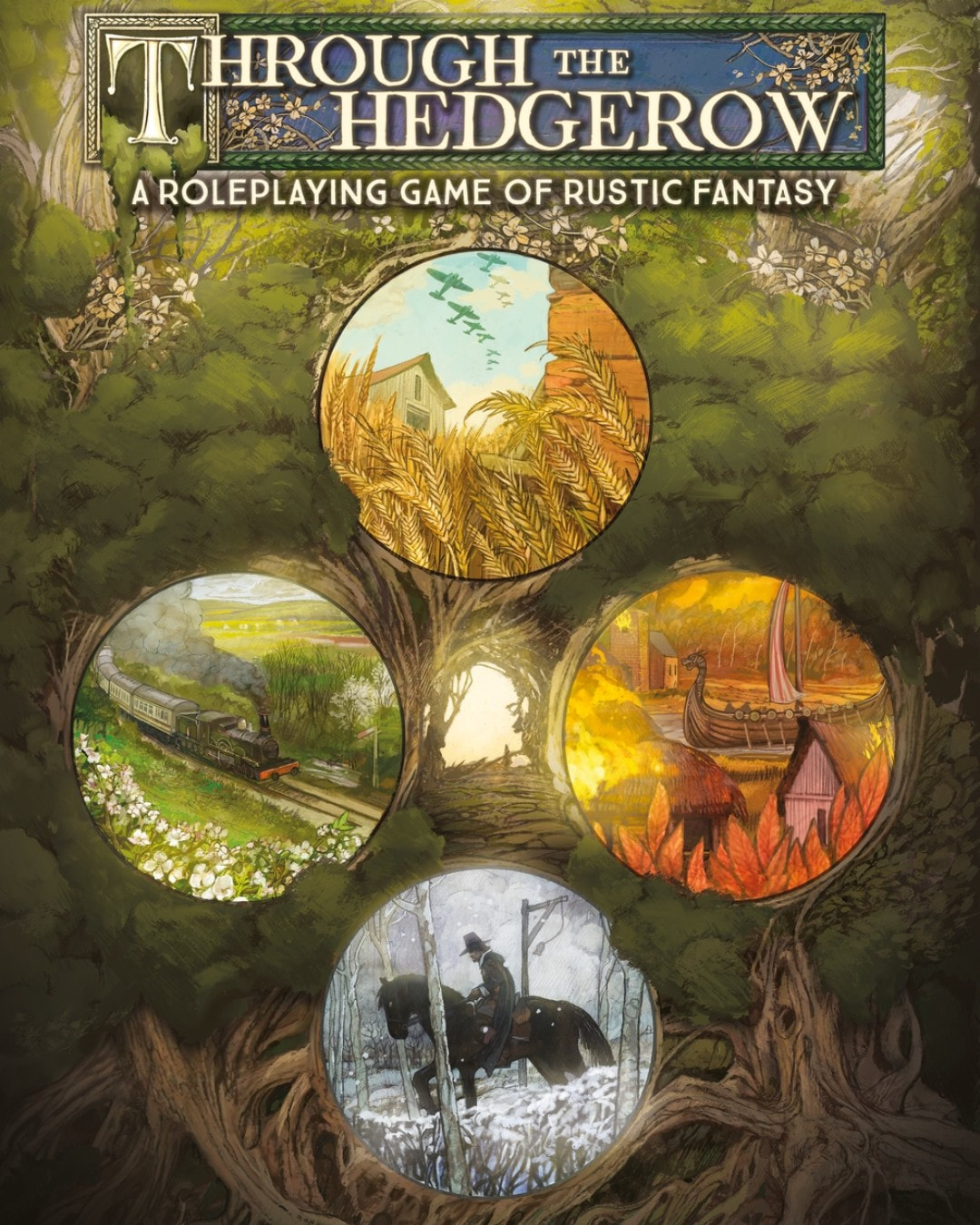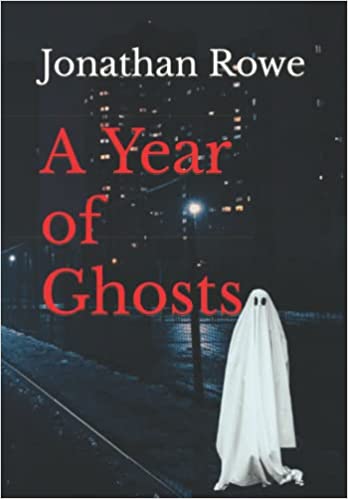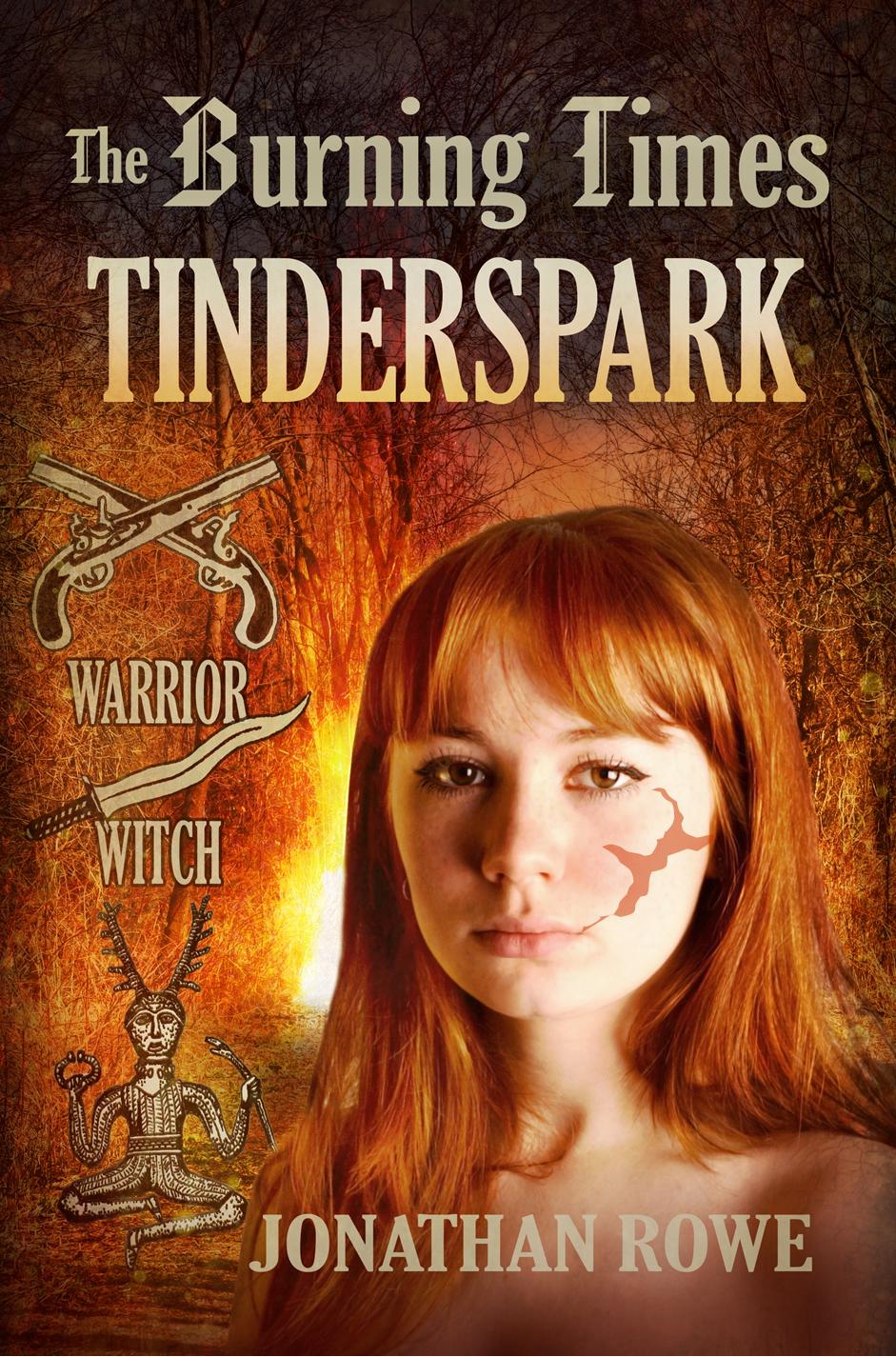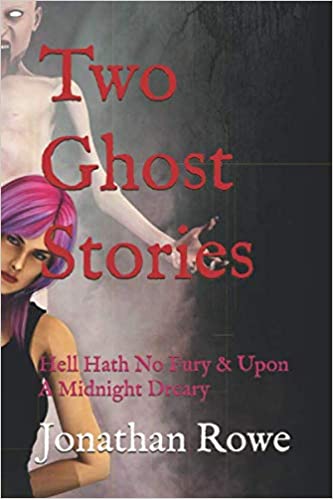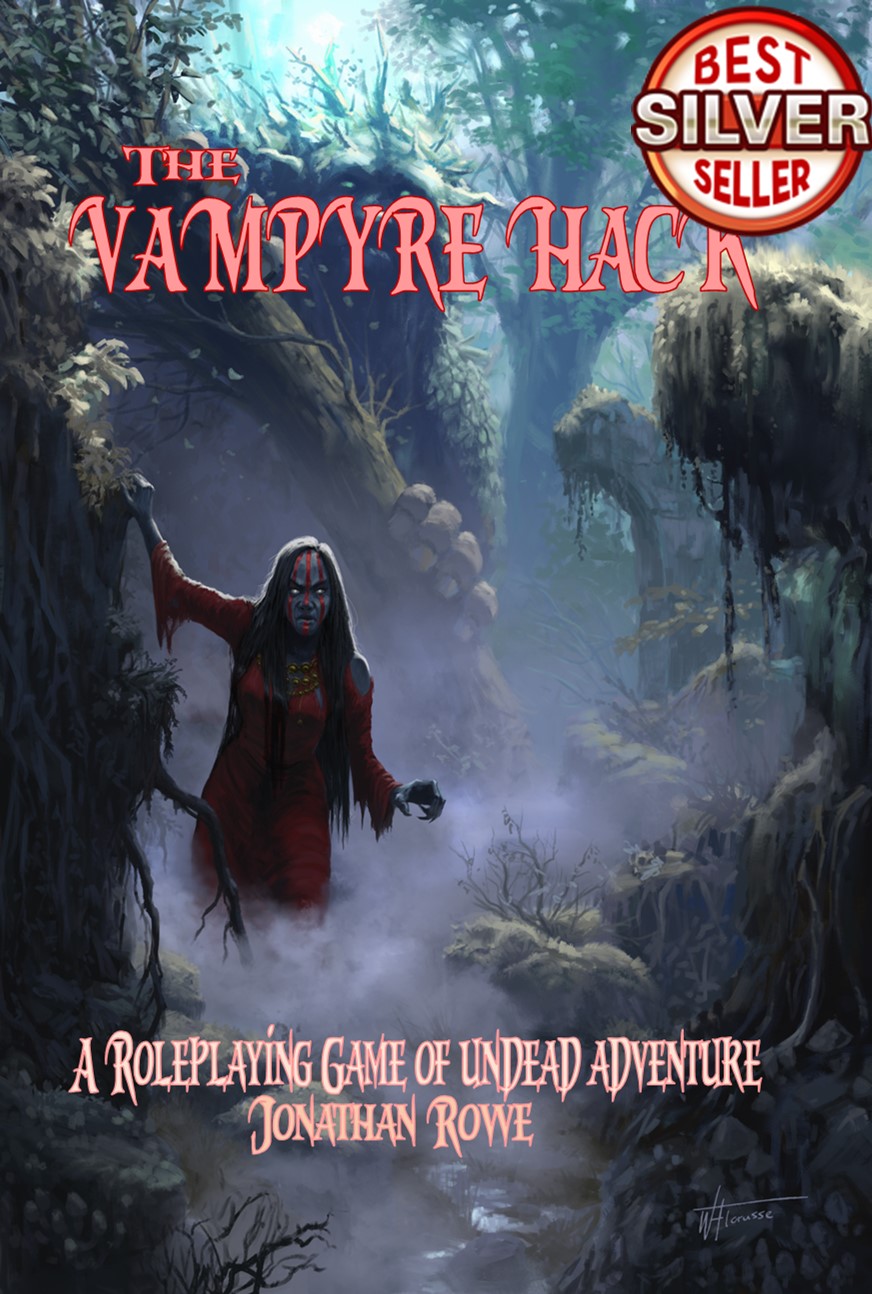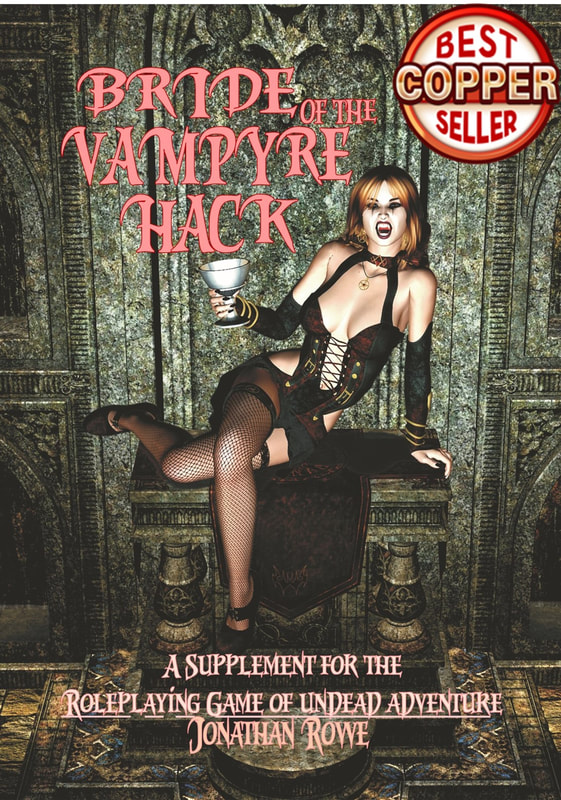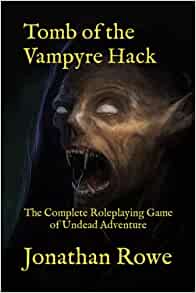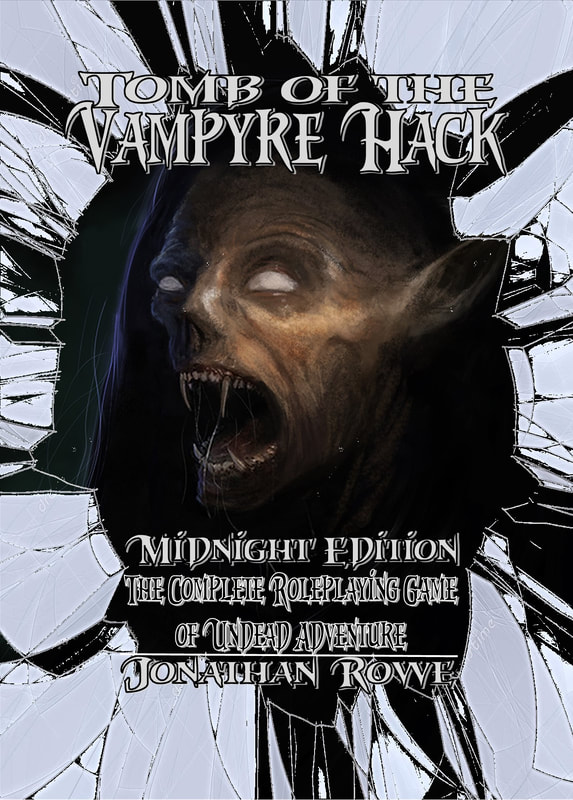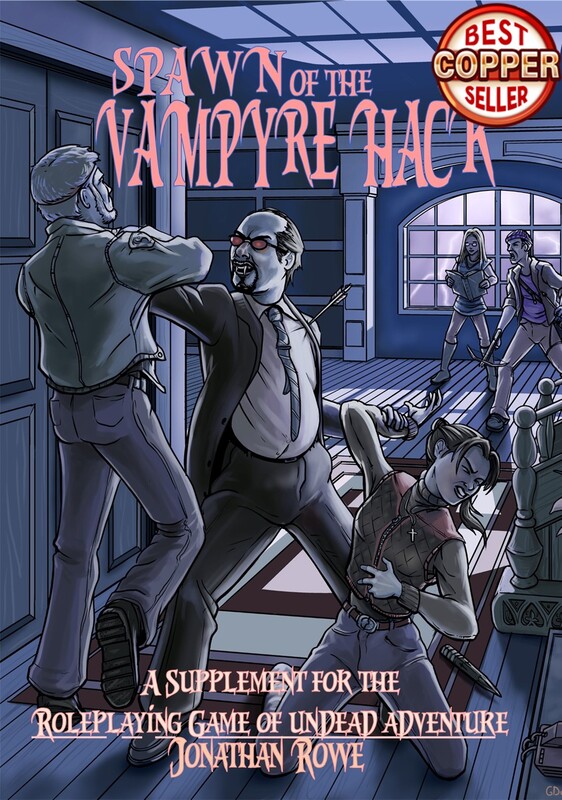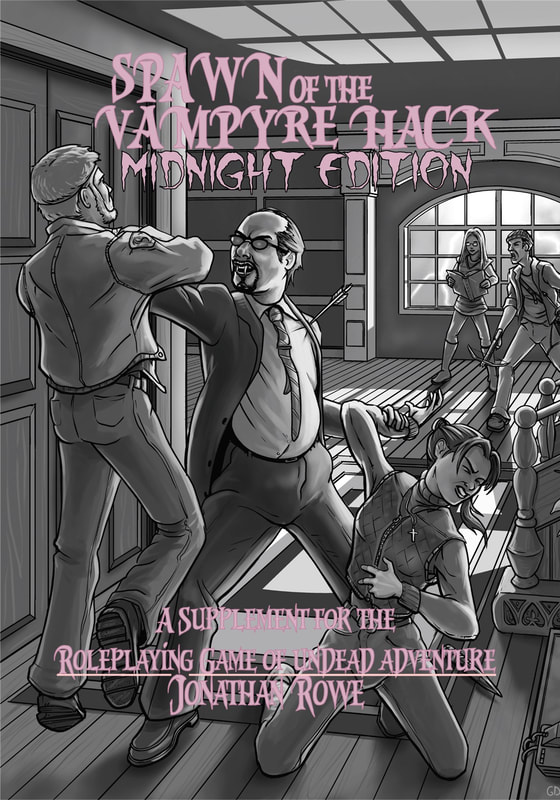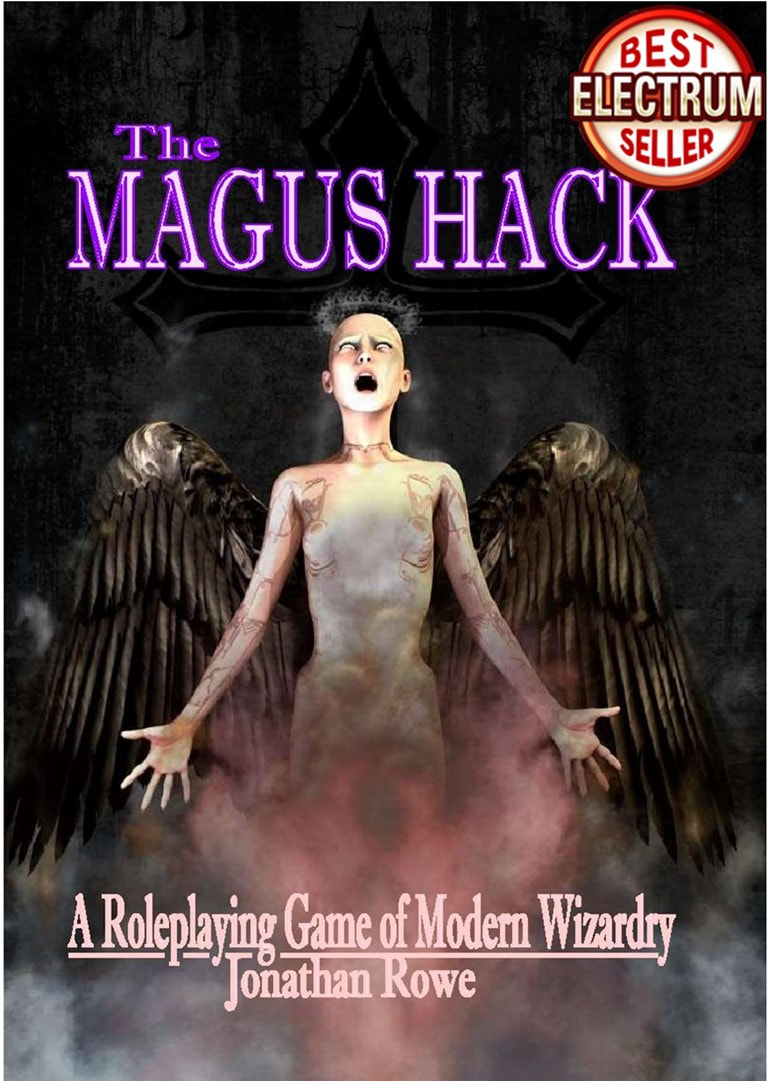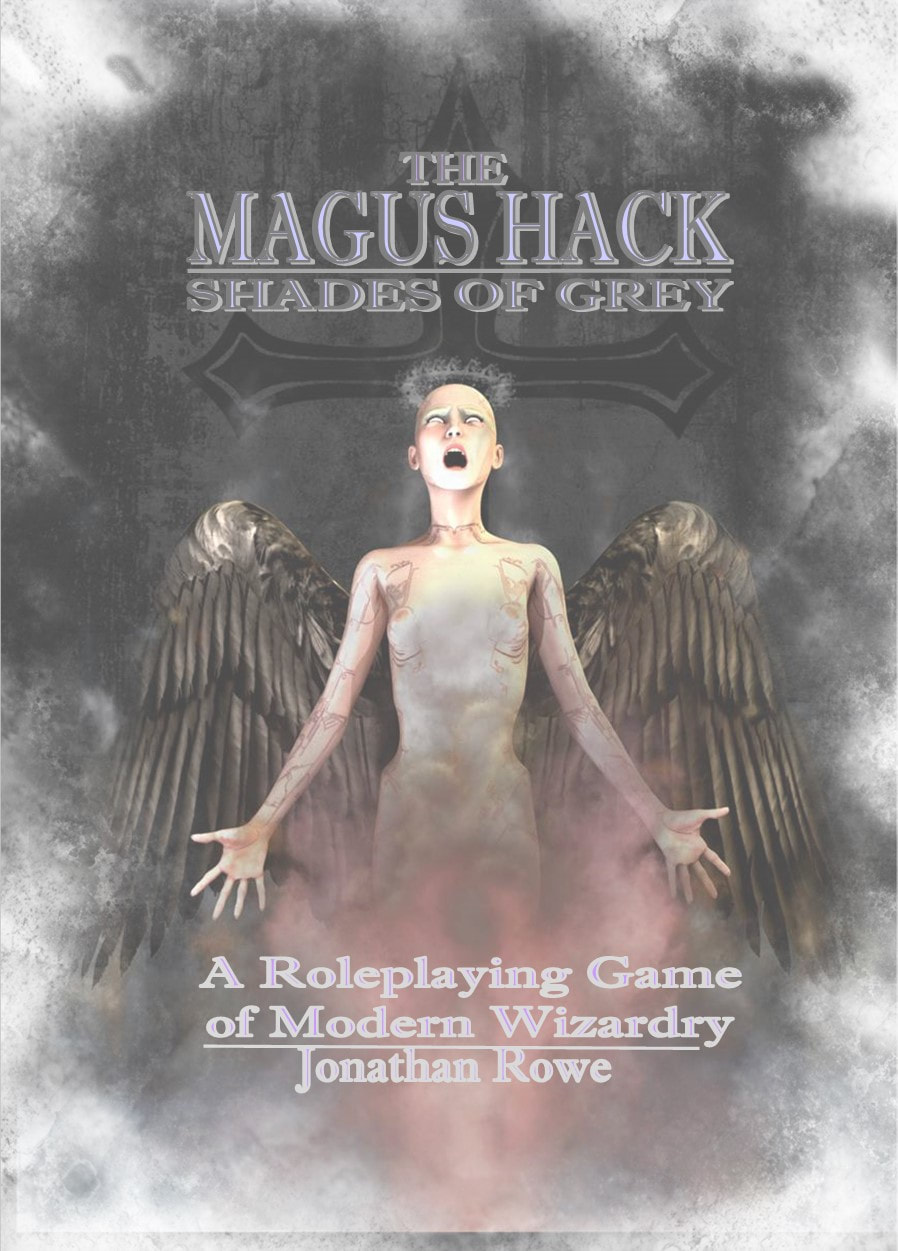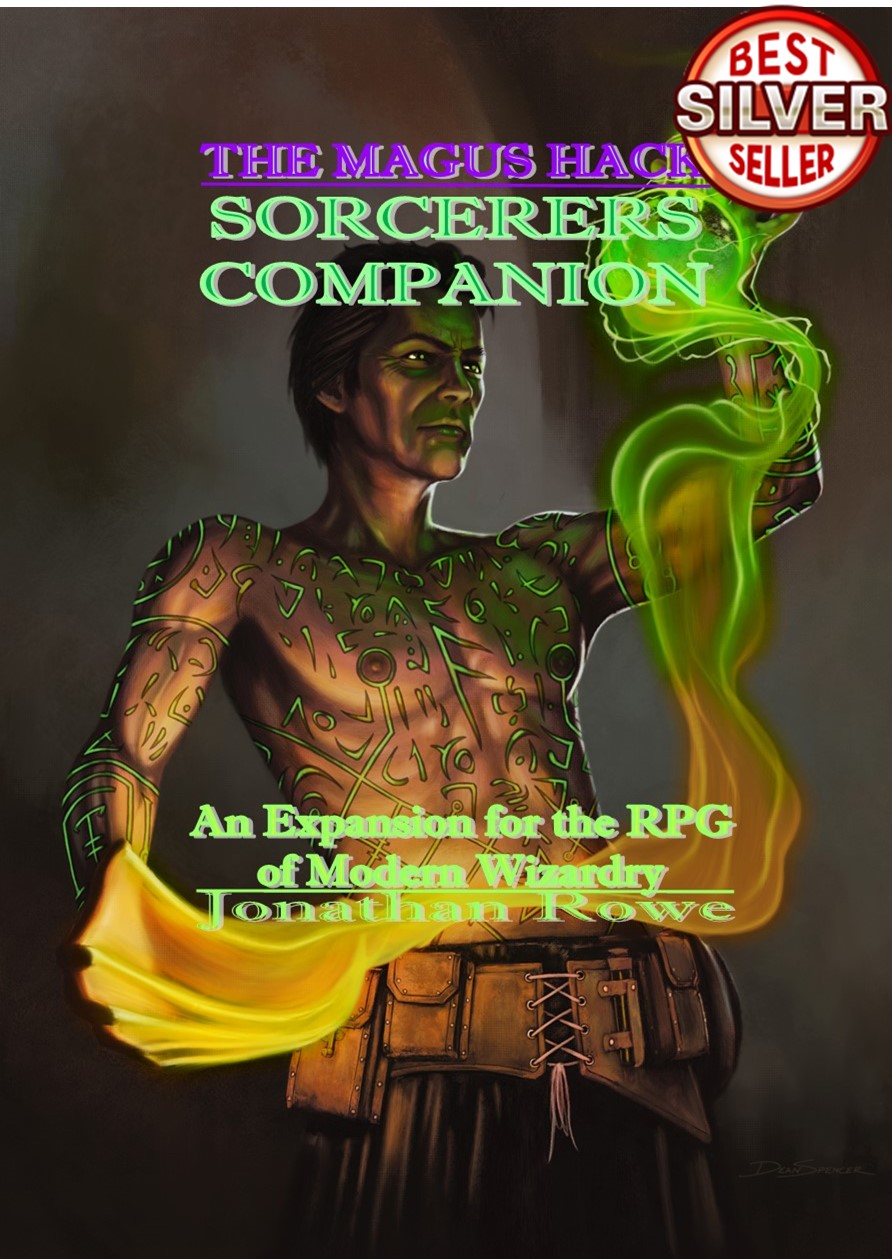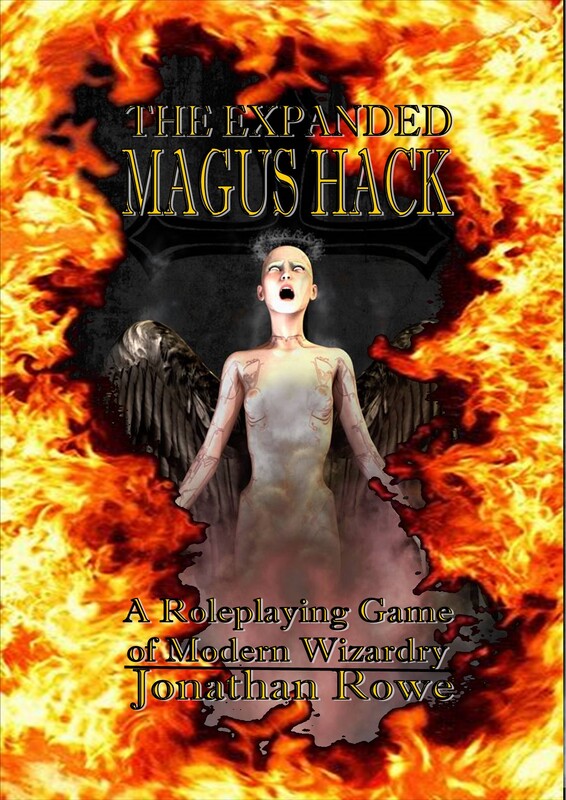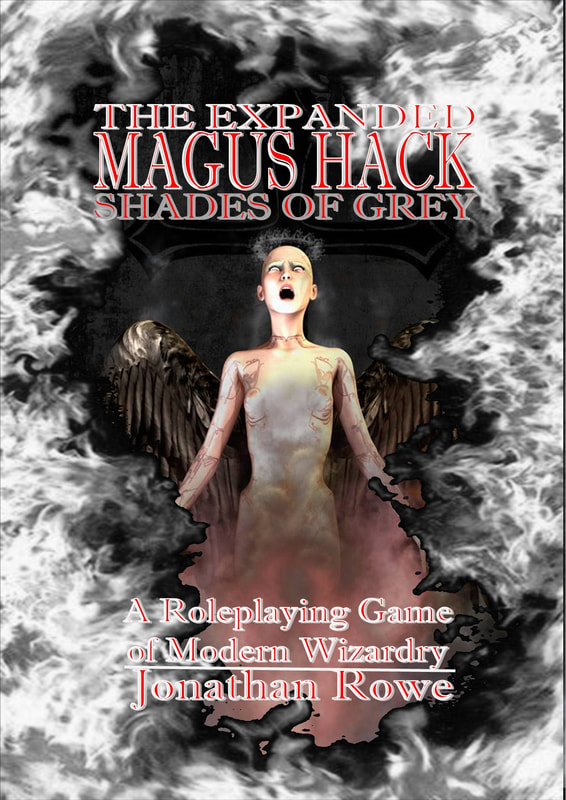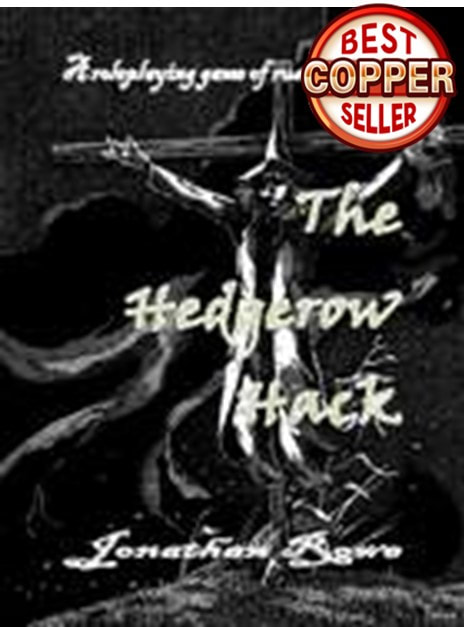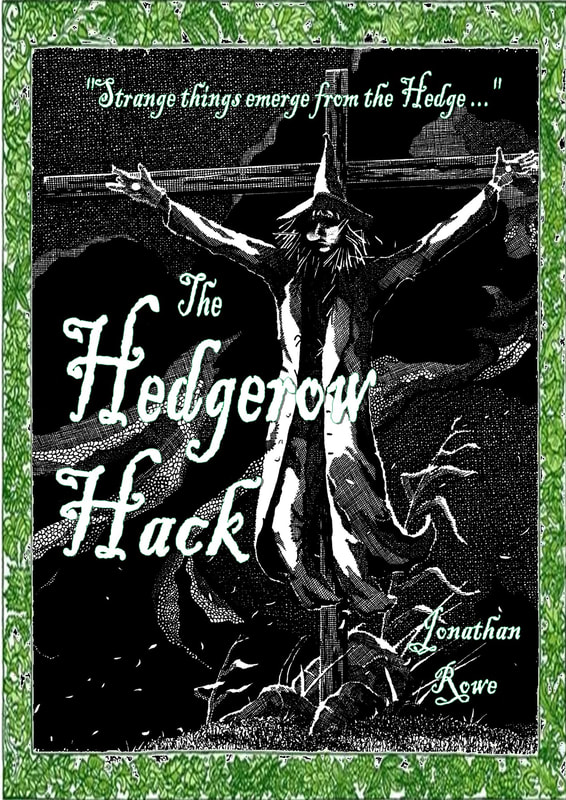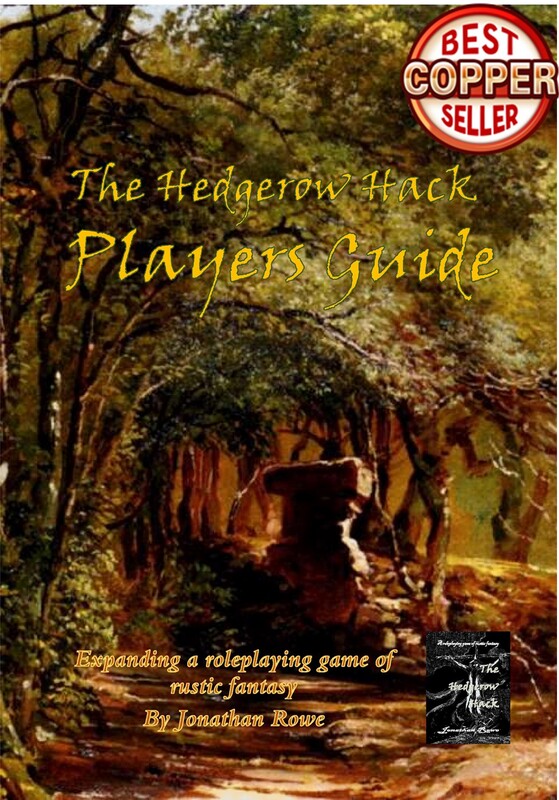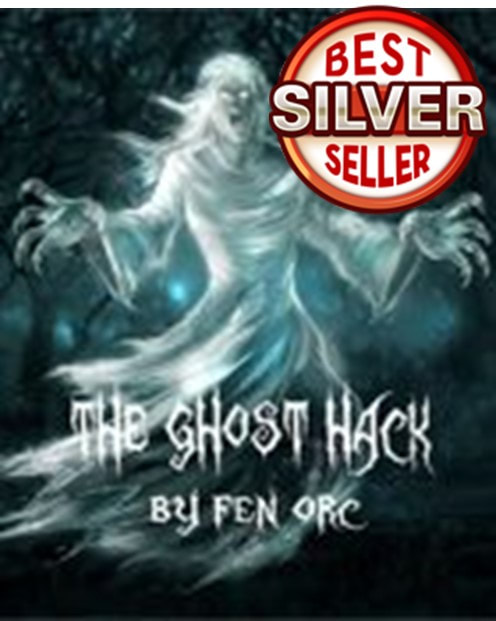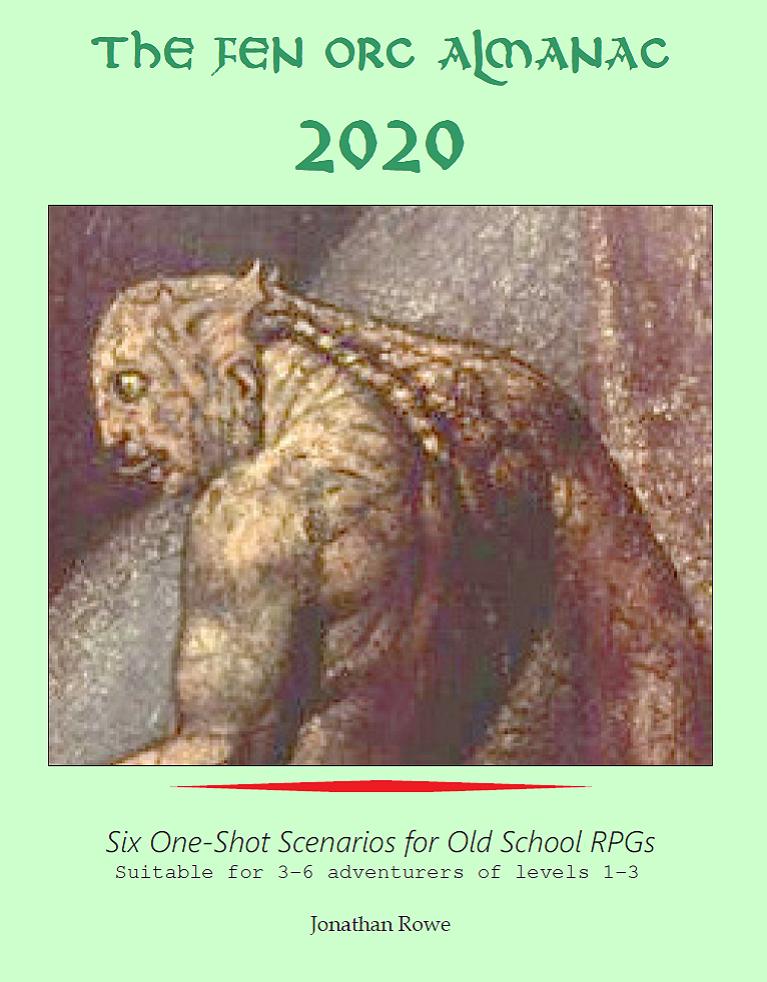|
Robert G. Male's cover illustration for the expansion just pops with ghoulish glee. You can find the Bride on drivethrurpg or a softback edition on Amazon. When I was gripped by an urge to revisit 1990s Vampire: the Masquerade, I didn't want to buy back into its convoluted lore, multifarious Disciplines or Great Handfuls of Dice, much less its tired tropes about each Clan. I wanted an OSR-style approach, simple Classic-6 Stats, roll-a-d20 resolutions. I wanted the Black Hack's addictive exhausting die mechanic. I wanted Matthew Skail's Blood Hack RPG ... But then I had to adapt it to V:tM's broad outlines and it ended up becoming a game in its own right: the Vampyre Hack was born. Still advocating for Matthew Skail's Blood Hack; my own Vampyre Hack is also on drivethrurpg or there's a softback/hardback on Amazon. In the last blog, I shared some design notes for the planned expansion, inspired by where White Wolf went next with Vampire: the Masquerade in 1991. Four new vampire Clans arrived plus a fifth former-Clan, but they were all half baked. Each one of them has been revised several times over the decades, whereas the 'Classic Seven' Clans from Mark Rein-Hagen's original rules remain pretty much unaltered. In particular, it seems to me the decision to root these new Clans in (stereotypes about) real world ethnic groups and religion has been very problematic. It's a direction of travel I wanted to reverse with Bride of the Vampyre Hack. Then, in 1992, there were more innovations. The 1992 Players Guide to the SabbatIf the 1991 Players Guide (PG) had been a bit of a disappointment, the following Players Guide to the Sabbat (PG-S) was a barnstorming tour-de-force. Up until now, the Sabbat had been a shadowy sect of vampire cannibals who didn't seem to care about restraining their humanity or hiding from humans - your classic Big Bad Evil Guys in any campaign. Now here they were as player character options - with a Sabbat chronicle now very much an option too. For everything that felt half-baked, wishy-washy or clichéd in the PG, there was something developed, sharply realised and wildly imaginative in the PG-S. Not that Vampire needed revitalising, but PG-S was that brilliant third album after a sophomore slump - like Blondie's Parallel Lines. One of these things is just like the other one Lasombra and Tzimisce At the core of what PG-S offered was a pair of new Clans. The Lasombra are shadow-wielding puppetmasters and the Tzimisce (how we anguished over the pronunciation!) are flesh-warping sociopaths. The contrast between this pair and the lacklustre efforts in the PG cannot be understated. Although not rooted in anything (to my knowledge) in real-world vampire folklore or horror movies, these two Clans immediately made themselves at home in the game's legendarium. Unlike the hokey Assamites or Ravnos, these two felt archetypal not stereotypical. Like the Classic Seven, they've been extensively added to since then, but not revised in their core concept. Moreover, although taking some flavour from the real world regions (Tzimisce are pagan demonists from the Balkans) and cultures (Lasombra are parodies of Roman Catholic aesthetics), they're not boringly reductive in the way that Setites and Giovanni were. Fans loved them - and still do. I bet, if someone took a global poll of Vampire players and asked for their favourite Clan, Tzimisce and Lasombra would take the top two positions, and by a clear margin. In hindsight, there were problems brewing. The designers clearly had an urge to tie vampire Clans in with real world cultures and kept pushing Tzimisce in the direction of being literal Transylvanians. They couldn't make their minds up about the weird Sci-Fi horror Discipline of Vicissitude - infamously, a later supplement suggested it was an alien parasite from another dimension. A goofy mis-call, but understandable because Vicissitude just didn't seem to fit with the other vampiric powers (it was always hard to imagine a non-Tzimisce learning it). A related issue, though in itself a nice touch, was adding a Derangement discipline for Malkavians. In hindsight, should have been their gig from the outset - though it raises the issue of why this Discipline should be available to any other Clan? Really, it's a class ability, not a generic power that this type of vampire happens to excel at. Meanwhile, the connection between the Sabbat generally and Lasombra in particular with Latin America hasn't aged well. It's a barely-coded phobic reaction to Hispanic immigration into the USA with some derogatory tropes about Mexico and Catholicism for good measure. Spain now joins Italy as a country that, in the World of Darkness at any rate, is basically just an exporter of vampires. But all that was for later editions to clear up. My problem is more with the moral direction the game took. Mark Rein-Hagen's original rules (released only a year earlier but now already outdated and replaced by a 2nd edition in 1992) emphasised the tragedy of vampiric existence: 'a beast I am lest beast I become' was his catchphrase and the tone was elegiac and despairing. The PG-S ushered in a new 'Vampions' style of play, where PCs exulted in their monstrous natures or else acted like amoral nocturnal superheroes. Lasombra and Tzimisce and the wider exploration of the Sabbat's ideology didn't create this drift, but it certainly intensified it. The new catchphrase felt like: 'my monster's cooler than yours!' The 1992 Storytellers HandbookI remember valuing the Storytellers Handbook (SHB) at the time, since it offered lots of advice (and a few clarifying worksheets) for designing settings and supervising political intrigues. It also marked what I think was the last appearance of the suggestion that vampires could regain their humanity by killing their creators and the first of many revisions of the game's clunky and imprecise combat system. It also developed the World of Darkness by providing stats for werewolves, magi, ghosts, faeries, demons, and mummies. Since a lot of this content went on to get its own bespoke game (Werewolf: the Apocalypse came out that same busy year!), the SHB now functions as a sort of roleplaying time capsule, preserving a window into the state of the game before the now-famous wider setting emerged. But it's lasting contributions were two new Bloodlines and their signature disciplines: the flying Gargoyles and the demon-worshipping Baali. Both were clearly signposted as being NPC-only propositions: the Gargoyles because they were a slave-race for the wizardly Tremere and the Baali because they were just cartoonishly evil. I never really understood why the Gargoyles needed to be vampires at all. In the Bride of the Vampire Hack, they're Golems, as they always should have been. The introduction of the Baali brings me back to V:tM's recurring vice. Mark Rein-Hagen creates a game in which everyone is a monster but also no one is: every vampire is a tragic figure, locked into bestial behaviour by her own physiology and the toxic political structure that such physiology creates. The design team almost immediately bins that notion by making irredeemably evil vampires a playable option within the Sabbat and introducing first one (the Setites) and now two vampire factions that literally worship Evil. In fact, the following year, Chaos Factor was published: a cross-over scenario for Vampire, Werewolf and Mage which was pretty much the template for the 'Vampions' style of play and featured a Baali 'Methuselah' as its ultimate Boss Fight. These trends are not unrelated! Ahhh, Sam Haight - a ghoul who became a werewolf who became a mage. They always reassure you not to worry, it'll never happen, then immediately it does. What's the Bride's take on this?Writing the Vampyre Hack involved a straightforward adaptation of the 'Classic Seven' Clans into Blood Hack style Tribes. Only la Tribu Dullahan represent a real step away from the Malkavian template, offering a mystically divided personality instead of a vague and problematic 'just roleplay crazy.' Bride of the Vampyre Hack tackles the later Clans and the last blog covered the independents, known here as les Tribus Dévouées for their devotion to the Blood Gods. Incidentally, Vampyre Hack enables me to downplay V:tM's role for Antediluvians, leaving it unknown whether the 'Blood Gods' are really vampyres and whether they founded particular Tribes. One benefit of the Hack approach emerges straight away. By treating Tribes as character classes, the clumsy one-note Disciplines get abolished in favour of a broad selection of Blood Gifts available to all vampyres. Now, class-based abilities give each Tribe its distinctiveness. For example, Tzimisce become la Tribu Zoltan. Instead of creating a bunch of vicissitude-style Blood Gifts, the Tribe gets a flesh-warping class ability the starts off small (granting extra eyes, shaping claws or scaly hides) and grows into merging bodies together to make monstrosities. The Zoltanok have the predictable curse that they must rest in their grave earth, but I've gone a bit further with this, giving them a Frenzy triggered by crossing running water and a connection to the land that can make them unlikely allies of environmentalists. The Tzimisce pic from the 1998 Revised Edition [left] really captured their weirdness, but 1996's Vampire: Dark Ages [right] got the Transylvania vibe - l felt the newer Clans were served better by the Dark Ages setting than the modern one Meanwhile la Tribu Rakasha has a shadow manipulation ability that improves as they go up levels. They open rifts to a dimension known as the Unlife, the influence of which starts to corrupt any place they spend time in, including turning humans into black-eyed Un-people that serve as the Rakashas' familiars, but probably have an agenda of their own. Ultimately, Rakashas fear the Unlife will consume them. Rakashas don't cast visual reflections, same as Lasombra, but I've given them the rest condition of being in absolute darkness, since my Lamias (Setites) no longer have that link to being in darkness - which always struck me as overlapping with Lasombra in the first place. Molechim are my Baali analogues. I've decided to make them a barely/kind-of playable option. They're demon-possessed, but the human persona still clings on and the two struggle for control. While the demon is in sole charge, it goes about a villainous agenda to identify a special victim, corrupt them and then turn them into a Molech. The human persona can frustrate this agenda. Yes, it means there are periods where you can't fully control your own character, but it's got a tragic arc to it that I like. The general tenor of this is that these Tribes are not objectively horrible, but they are tragic and doomed. You can still play them as cool edgelords if that's your thing: Zoltan can be cackling Tzimisce and Rakasha the preening Lasombra, while Molech fits the bill for vampyre diabolist. I just like to think I've put a bit of mystery and ambiguity back into them. The intent is that these Tribes should often end up acting just like the V:tM Clans, but the reasons offered are a bit more open and interesting. For example, the Lamias (Setites) sponsor gang violence, drugs and sex trafficking, but do so because the want to bring down a social order they think is horrific for humans and vampyres. The nuance is their new weakness: they become besotted with anyone they feed from, so if they provoke a gang war in a neighbourhood, there's a mortal they must protect from the consequences of their own actions at all cost. Love and hate are part of their package; they don't just worship Evil. What other secrets is the Bride keeping?Like most RPG expansions, the main order of business is Lots More Stuff. The Coven are my ersatz Sabbat and there are rules for their unusual version of the Sanguine Fetter. I'm dialling back their inhuman horrible-ness - or at least, allowing GMs to make what they like of it, rather than baking it in. Vampyre Hack doesn't have a 'hierarchy of sins' but it does have the idea of a moral code, whereby you're spared making a Corruption check for somethings in return for making extra checks for others. Coven vampyres don't feel bad about mistreating humans but they do get corrupted if they betray, let down or disobey the Coven. There's a lot more Blood Gifts and Spells, including Necromantic Spells for the Stregas - but which other vampyres can learn if they pick up the Necromancer Elder Blood Gift. I give cities a lot of consideration, with some tables for random city generation if you want to build a game that way. Vampyres call their power bases in a city demesnes, but I figure the younger vamps are irreverent and call them 'Belfries.' There are rules for a dozen different Belfries, the dangers they pose, the benefits you can claim in them and special Exposure Crisis tables for reach one, to replace the generic table in the core rules. The Security Die mechanic from The Vampyre Hack gets a revision, incorporating the idea of Heat building up from adventure to adventure. The Security Die is a sort of wandering monster check that also represents the efforts by your enemies to cause trouble for you. Once it exhausts to zero, you have an Exposure Crisis, which might be a threat or an attack or the appearance of Witch-hunters who've been tipped off about you. Favours and Duties represent the help you can call in from grateful Elders or the chores those Elders might give you out of the blue. This is tied in to the job of maintaining the Charade that keeps mortals (largely, somehow) unaware of the undead. Favours can be leveraged for rumours or traded at the Rialto, which is the Belfry ruled by the arty Messalines. Each Tribe gets a section on its culture, with a focus on Beloveds and Ensigns. Beloved are the people vampyres feel irrational drawn to and obsessed with turning into vampyres too, triggering a centuries long obsessive relationship. Ensigns are people turned into vampyres for more practical reasons: they have valuable skills or resources that the undead want the use of. Players need to decide which type of vampyre they are and roll or choose the type of NPC who will one day be their Beloved ... It's been a minor labour of love. While Vampyre Hack just delivered V:tM-as-D&D without too many deviations, Bride goes a lot further when it departs from its source and ends up being (I suggest to you) a different and distinctive RPG.
0 Comments
Leave a Reply. |
30 Minute Dungeons
Essays on Forge
FORGE Reviews
OSR REVIEWS
White Box
THROUGH THE Hedgerow
Fen Orc
I'm a teacher and a writer and I love board games and RPGs. I got into D&D back in the '70s with Eric Holmes' 'Blue Book' set and I've started writing my own OSR-inspired games - as well as fantasy and supernatural fiction.. Archives
July 2024
Categories
All
|

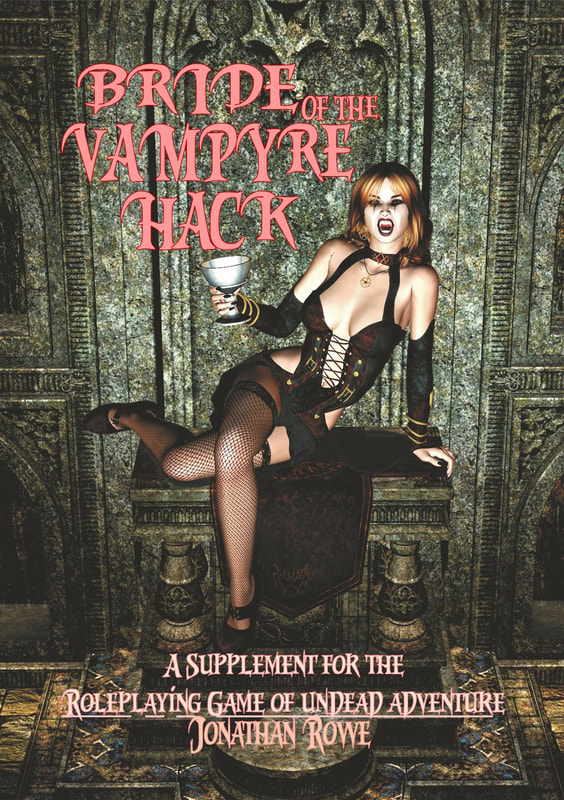
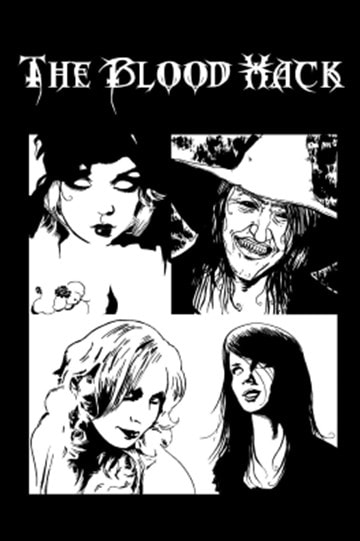
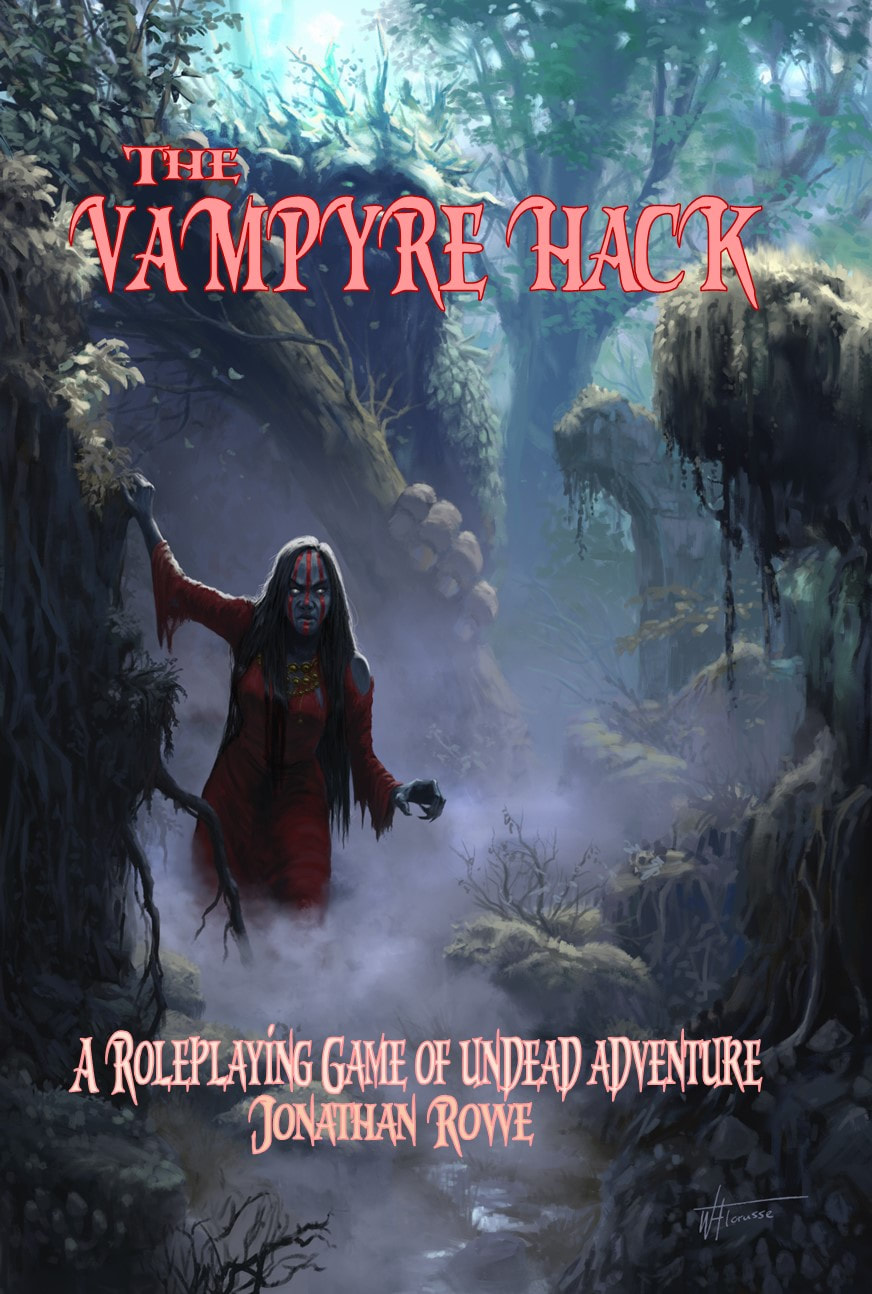
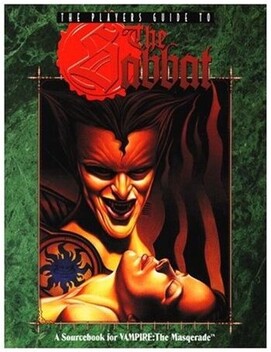
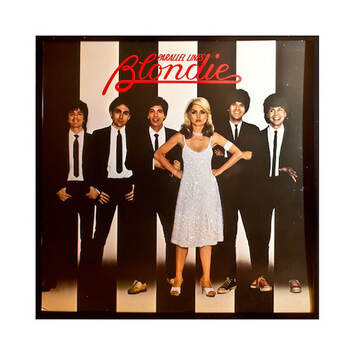
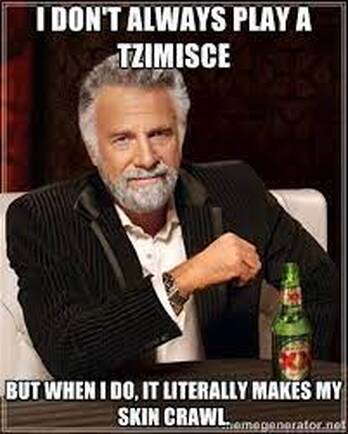
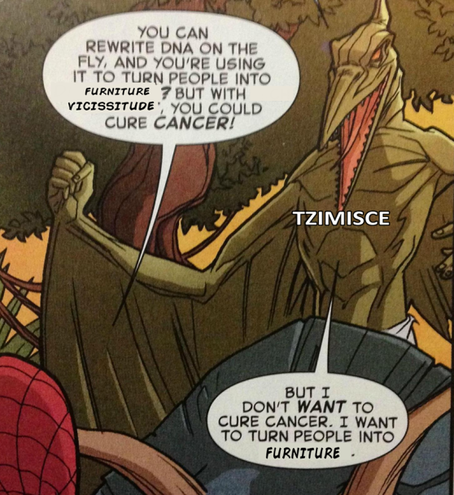
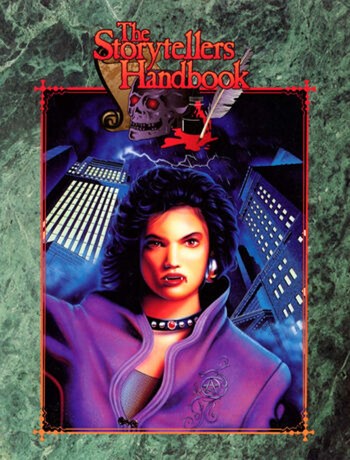

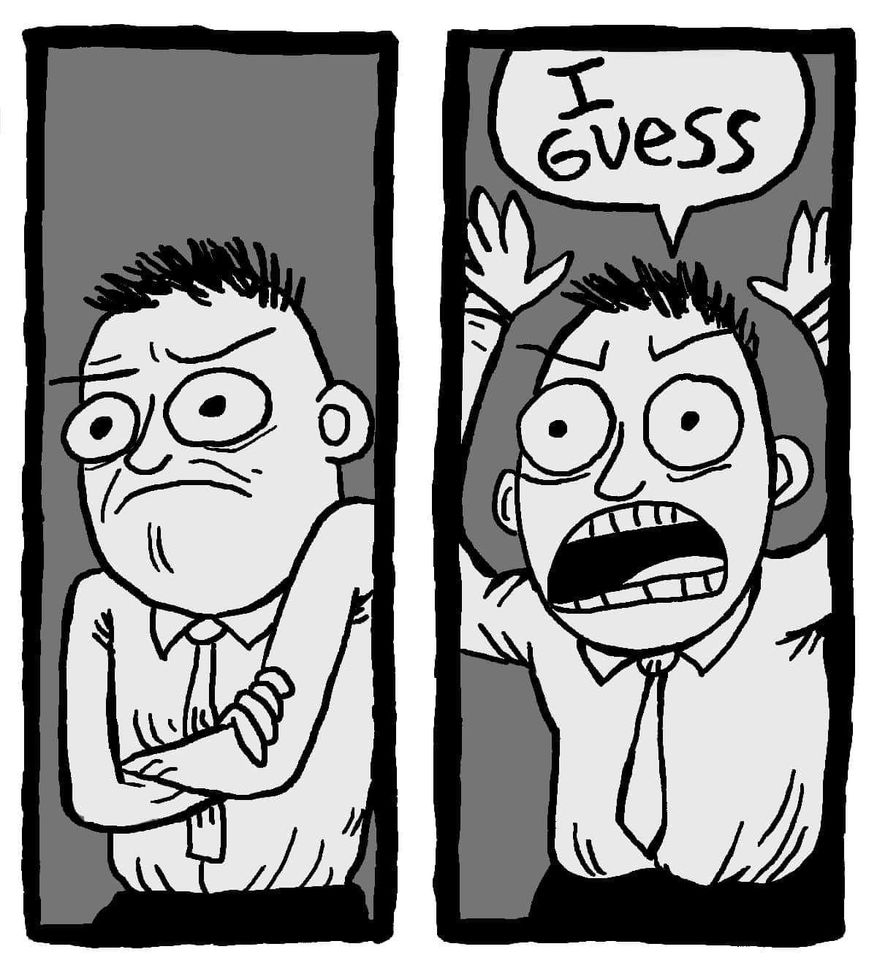
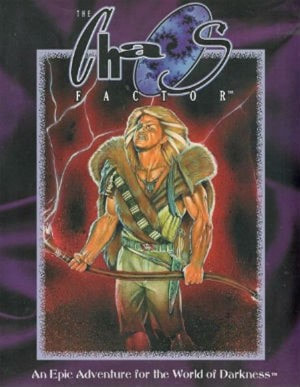
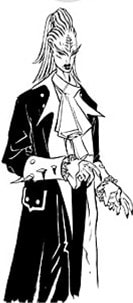
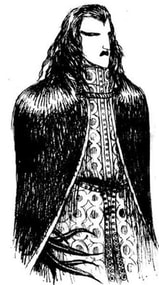

 RSS Feed
RSS Feed
